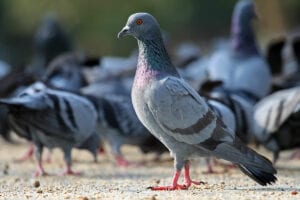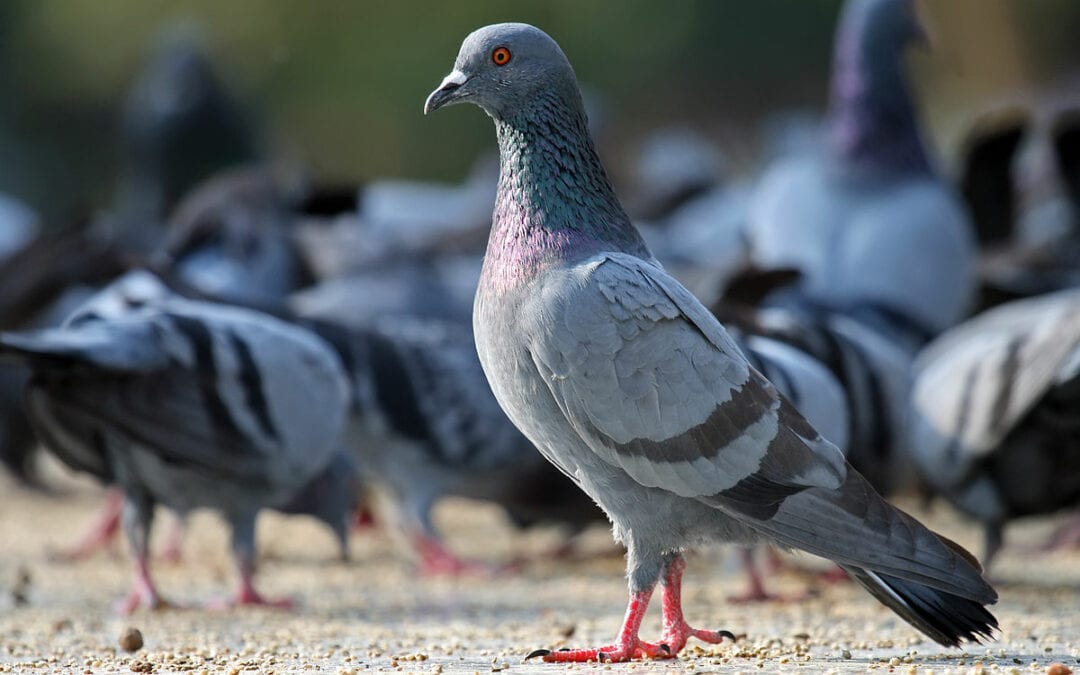The number of passenger pigeons went from billions to zero in mere decades, in contrast to conventional wisdom that enormous population size provides a buffer against extinction. Our understanding of the passenger pigeon’s extinction, however, has been limited by a lack of knowledge of its long-term population history. Here we use both genomic and ecological analyses to show that the passenger pigeon was not always super abundant, but experienced dramatic population fluctuations, which could increase its vulnerability to human exploitation. Our study demonstrates that high-throughput–based ancient DNA analyses combined with ecological niche modeling can provide evidence allowing us to assess factors that led to the surprisingly rapid demise of the passenger pigeon.

To assess the role of human disturbances in species’ extinction requires an understanding of the species population history before human impact. The passenger pigeon was once the most abundant bird in the world, with a population size estimated at 3–5 billion in the 1800s; its abrupt extinction in 1914 raises the question of how such an abundant bird could have been driven to extinction in mere decades. Although human exploitation is often blamed, the role of natural population dynamics in the passenger pigeon’s extinction remains unexplored. Applying high-throughput sequencing technologies to obtain sequences from most of the genome, we calculated that the passenger pigeon’s effective population size throughout the last million years was persistently about 1/10,000 of the 1800’s estimated number of individuals, a ratio 1,000-times lower than typically found. This result suggests that the passenger pigeon was not always super abundant but experienced dramatic population fluctuations, resembling those of an “outbreak” species. Ecological niche models supported inference of drastic changes in the extent of its breeding range over the last glacial–interglacial cycle. An estimate of acorn-based carrying capacity during the past 21,000 y showed great year-to-year variations. Based on our results, we hypothesize that ecological conditions that dramatically reduced population size under natural conditions could have interacted with human exploitation in causing the passenger pigeon’s rapid demise. Our study illustrates that even species as abundant as the passenger pigeon can be vulnerable to human threats if they are subject to dramatic population fluctuations, and provides a new perspective on the greatest human-caused extinction in recorded history.
Pigeon Patrol Products & Services is the leading manufacturer and distributor of bird deterrent (control) products in Canada. Pigeon Patrol products have solved pest bird problems in industrial, commercial, and residential settings since 2000, by using safe and humane bird deterrents with only bird and animal friendly solutions. At Pigeon Patrol, we manufacture and offer a variety of bird deterrents, ranging from Ultra-flex Bird Spikes with UV protection, Bird Netting, 4-S Bird Gel and the best Ultrasonic and audible sound devices on the market today.
Voted Best Canadian wholesaler for Bird Deterrent products ten years in a row.
Contact us at 1- 877– 4– NO-BIRD, (604) 585-9279 or visit our website at www.pigeonpatrol.ca
Pigeon/Pigeon Patrol / Pigeons Roosting / Vancouver Pigeon Control /Bird Spikes / Bird Control / Bird Deterrent / Pigeon Deterrent? Surrey Pigeon Control / Pest /Seagull deterrent / Vancouver Pigeon Blog / Birds Inside Home / Pigeons in the cities / Ice Pigeons/ What to do about pigeons/ sparrows , Damage by Sparrows, How To Keep Raccoons Away, Why Are Raccoons Considered Pests/ De-fence / Pigeon Nesting/ Bird Droppings / Pigeon Dropping/ woodpecker control/ Professional Bird Control Company/ Keep The Birds Away/ Birds/rats/ seagull/pigeon/woodpecker/ dove/sparrow/pidgeon control/pidgeon problem/ pidgeon control/flying rats/ pigeon Problems/ bird netting/bird gel/bird spray/bird nails/ bird guard

